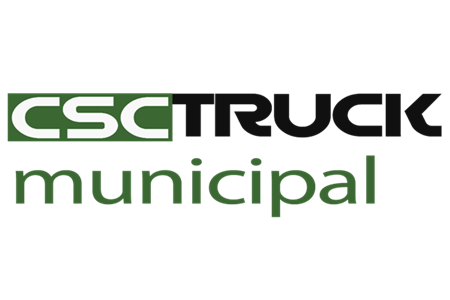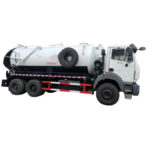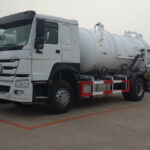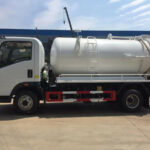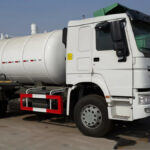Industrial facilities generate vast quantities of sludge—a semi-solid byproduct of manufacturing, wastewater treatment, and chemical processing—that requires specialized handling to meet environmental regulations and operational efficiency standards. Sludge collector trucks are engineered to extract, transport, and dispose of these high-viscosity materials safely, but their deployment must align with specific operational needs to justify their significant investment and operational costs. This article examines the key scenarios where these vehicles prove indispensable, their technological advantages over alternative methods, and how they integrate with other industrial cleaning equipment like vacuum sewer trucks and sweeper trucks to maintain comprehensive waste management systems.
1. Handling High-Viscosity Industrial Byproducts
Not all waste streams can be managed with conventional pumping or excavation equipment. Sludge collector trucks excel in environments where material consistency demands specialized extraction and containment.
Conditions Necessitating Sludge Collector Trucks
- Thickened waste streams with solids content exceeding 15–20%, which would clog standard vacuum sewer trucks
- Hazardous sludge containing heavy metals, oils, or toxic chemicals requiring sealed transport compartments
- Large-scale deposits in lagoons or settling ponds where manual removal would be prohibitively slow
Industry-Specific Applications
- Food Processing: Recovery of grease trap waste and organic sediments
- Petrochemical Plants: Safe removal of tank bottom sludges with explosive vapors
- Pulp & Paper Mills: Extraction of fiber-rich biosolids from treatment systems
The trucks’ positive displacement pumps and high-torque vacuum systems can handle materials ranging from peanut butter-like consistency to nearly solid cakes, making them irreplaceable for these challenging environments.
2. Regulatory Compliance and Environmental Safety
Industrial sludge often falls under stringent disposal regulations (e.g., EPA’s RCRA, EU’s Waste Framework Directive), where improper handling risks six-figure fines. Sludge collector trucks provide compliance assurance through:
Containment Features
- Vapor-locked tanks preventing hazardous air emissions during transport
- Spill-proof quick couplers for hose connections when transferring to treatment facilities
- Washout-resistant interior coatings that simplify decontamination between loads
Documentation Integration
- Onboard scales generating digital weight tickets for waste manifests
- GPS-tracked routes proving compliant disposal at licensed facilities
- Sample ports allowing field tests before sludge enters the truck
These capabilities prove far more reliable than attempting to adapt municipal equipment like sweeper trucks for industrial sludge removal—a practice that risks cross-contamination and regulatory violations.
3. Cost Scenarios: When Alternatives Fall Short
While sludge collector trucks represent a significant capital expenditure, they outperform other methods in total cost of ownership for specific use cases:
Compared to Fixed Pump Systems
- Mobility avoids the need for permanent piping to distant treatment areas
- Versatility handles varying sludge types without reconfiguration
- Lower maintenance since pumps aren’t exposed to constant abrasive flows
Versus Manual Removal
- 80% faster for pits or tanks requiring confined space entry permits
- 50% labor reduction by eliminating shovel crews and skip loaders
- Reduced liability from minimized worker exposure to hazardous materials
Synergy with Other Equipment
For facilities with mixed waste streams, pairing a sludge collector truck with a vacuum sewer truck allows:
- Priority separation: The sludge unit handles thick deposits while the sewer truck manages liquids
- Emergency backup: If one system fails, the other can provide partial service
4. Operational Readiness and Fleet Integration
Deploying sludge collector trucks effectively requires alignment with broader maintenance strategies:
Preventive Maintenance Triggers
- Sludge depth sensors in clarifiers indicating 75% capacity
- Viscosity testing shows decreased pumpability in waste streams
- Regulatory audit schedules requiring documented cleanouts
Cross-Fleet Coordination
- Sweeper trucks pre-clean work areas to prevent debris from contaminating the sludge
- Vacuum sewer trucks follow sludge removal with line flushing to restore flow capacity
- AI scheduling software optimizes routes based on real-time sludge accumulation data
This integrated approach maximizes asset utilization while minimizing downtime, a critical factor in continuous-process industries like chemicals or pharmaceuticals.
5. Emerging Technologies Redefining Sludge Management
The next generation of sludge collector trucks incorporates innovations that expand their value proposition:
Automation and Robotics
- Autonomous nozzle positioning using LIDAR to map tank geometries
- Robotic arms for precise extraction in confined spaces like digesters
On-Site Treatment Capabilities
- Dewatering presses reducing sludge volume by 60% before transport
- Microwave dryers cutting disposal costs by converting waste to combustible pellets
Data-Driven Optimization
- IoT sensors tracking sludge composition trends for process adjustments
- Blockchain waste logs creating tamper-proof disposal records
These advancements position sludge collector trucks not just as waste haulers, but as active participants in circular economy strategies—transforming liabilities into recoverable resources while working seamlessly with vacuum sewer trucks for liquid wastes and sweeper trucks for solids management.
For industrial operators, the decision to deploy these specialized vehicles ultimately hinges on a simple calculus: When the combined costs of regulatory risk, production downtime, and alternative methods’ limitations exceed the investment in purpose-built equipment, sludge collector trucks transition from optional to essential. Their ability to turn a persistent operational challenge into a streamlined, compliant process justifies their role in modern industrial ecosystems.
